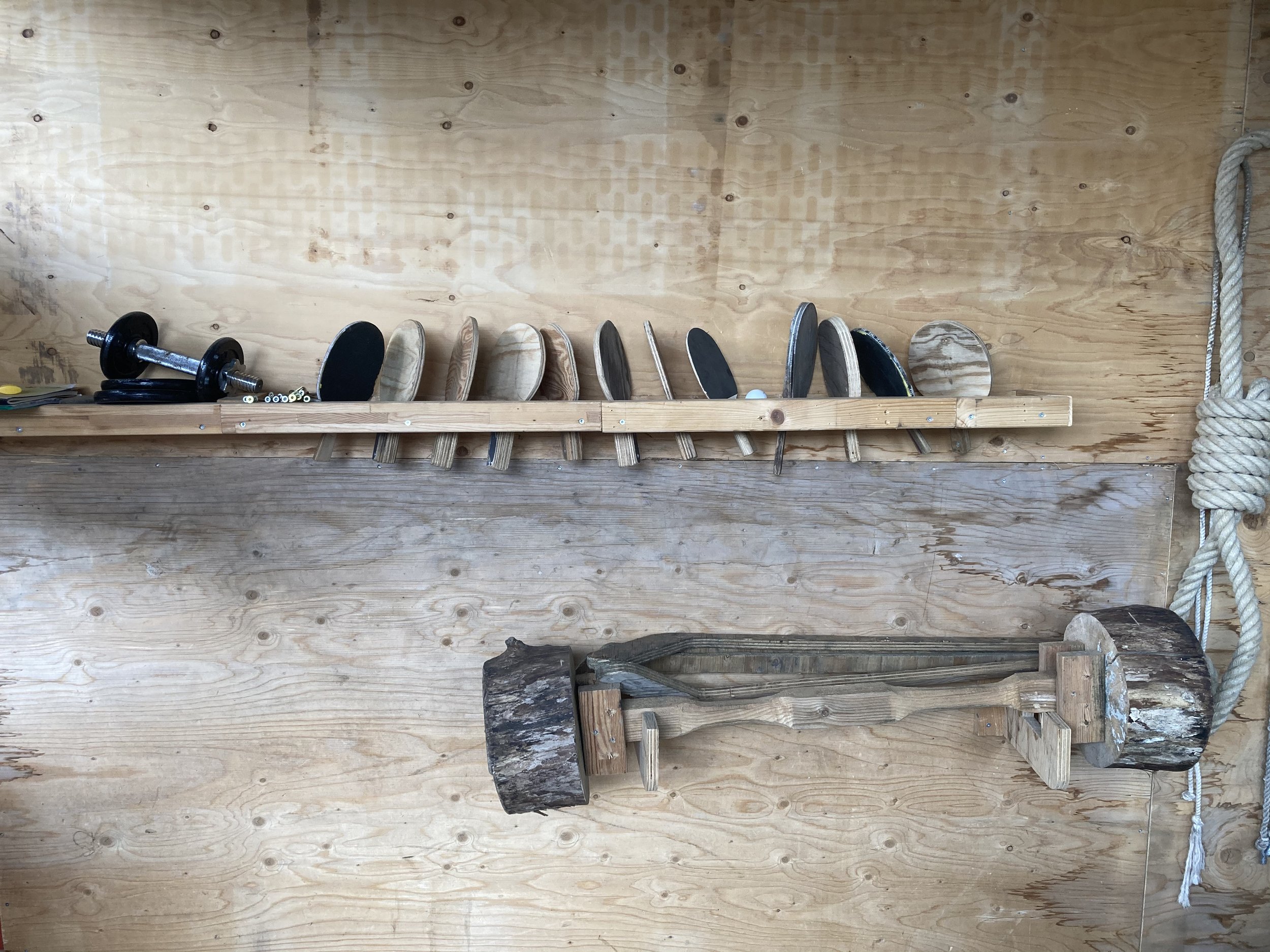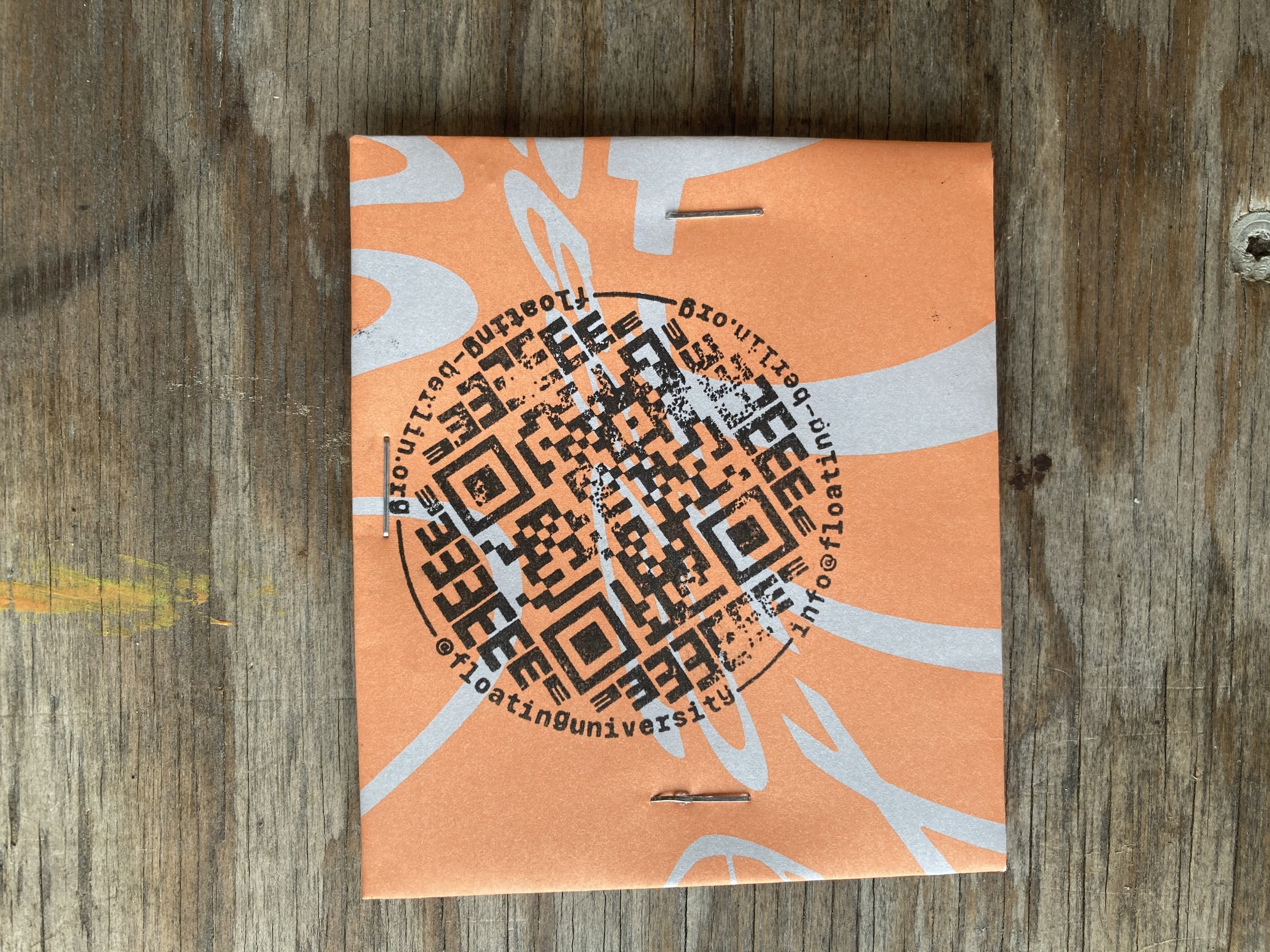Notes from Berlin
Down an unassuming backroad dotted with quirky camper vans and allotment gardens, we stumble upon an educational restoration project called Floating. A self-proclaimed Ex-titution, the programme seeks to subvert conventional learning hierarchies by creating a horizontal knowledge exchange platform and guaranteeing free space for collective activities, growth and creativity.
The project, its mission, and its hurdles provide a pretty comprehensive capsulisation of the city’s opportunities, its challenges, and its unique spirit; embodying Berlin’s most historically distinguishing characteristics: self-organisation, regeneration, and collaboration.
Image by Lena Gionvanazz. Spatial Experiments at Floating. Courtesy of Floating, eV.
If you mention airports to old-school Berliners you’re likely to get an eye-roll, an exasperated shrug, or at the very least, a knowing nod. That’s because the airports of Berlin have undergone a walloping overhaul over the course of the past several decades, with multiple disused airports leaving acres of land in their wake that eventually someone has to repurpose: the most iconic of them being Tempelhof in the city’s southern borough. In 2014, 200,000 Berliners voted to preserve the public park that had been Tempelhof’s former airfield.
Image by Victoria Tomaschko. FUB water lab. Courtesy of Floating eV and Raumlabor Berlin
Four years later, Floating University was founded. Built on stilts in a water retention pond of the former airport-turned-multi-use public space, the venture is now in its fifth year. The basin, which had been left abandoned and overgrown for over 80 years, was first developed by an architecture collective whose quirky, utopian aesthetic set the tone for the wooden Floating village, a series of indoor/outdoor structures connected by buoyant runways set on the water. The first structure was designed by the architecture studio Atelier Bow Wow in 2015 and was described by Jessica Loudis as a “wooden spaceship that had peacefully settled upon a swamp.”
Floating University had alternative education at its core from the start, though its ultimate function is rather undefined. By resisting the designation of ‘institution’, Floating is experimental through and through, and the organisers insist that it will only exist for as long as it makes sense. In 2021, some conservative politicians got up in arms about the Floating University calling themselves a “university,” given the lack of official academic accreditation by powers that be. Since then, they’re just Floating.
Image by Victoria Tomaschko. Courtesy of Floating, eV.
Camille Moreno: What kind of events do you have?
Teresa Huppertz: We’ve got an upcoming event, a sort of art radio thing, but that’s external. We have our own programme and we also open up the location to people with creative endeavours who need space.
CM: Do they pay to host events here?
TH: Some do and some don’t - we have a standard 10% rule, but it totally depends on whether the people have any money. It’s great when we can at the very least make something out of it to help with maintenance. However, since we only work with non-commercial projects, most of them also have no money! (laughs) so it can all be very touch-and-go.
CM: Can you tell me about the current seedling project?
TH: We are offering packets of seeds to visitors, who take them home and germinate them. Shortly we will release a date when everyone will reconvene here to plant the sprouted seedlings together, especially at the main entrance to Floating. It is an invitation to appropriate the space.
Image by Victoria Tomaschko. FUB hotTub. Courtesy of Floating eV and Raumlabor Berlin.
CM: How many people are involved in the project?
TH: In the association, we are about 15-20 that are really active. We have a few that are more conceptually involved but not here physically, and during build weeks, we get maybe up to 20 volunteers a day. Sometimes we host an open call, which draws a crowd.
CM: Do you work full-time here at Floating?
TH: Nobody here works full-time. Everyone does other things as well to get by. Sometimes we get project funding, but only for particular programming. Other activities, like the building, are powered by people who are volunteering.
Image by Daniel Seiffert. Auditorium and kitchen. Courtesy of Floating, eV and Raumlabor Berlin.
CM: Are there any fish?
TH: No, fish would not survive - the water comes in and then flows back out into the Landwehr Canal, so if it does not rain, there would not be enough water for them to be submerged.
CM: How about frogs?
TH: Lots of frogs.
Google Earth image of Floating’s undeveloped pond in 2005.
CM: What other kinds of structures are there in addition to the original?
TH: Down at the bottom, there is an open-air cinema space, which we built last year. The canopy roof can be extended until the end of the runway. We have an auditorium - it used to have a roof, but we had to remove it and at the moment due to financial reasons we don’t know whether it will be replaced or not. We also have the Rain Water Palace, which is where we experiment with different methods of water filtration in order to repurpose rainwater. We learn about water, soil, and biodiversity from samples that we collect from the sediment.
CM: Is it toxic at all?
TH: Toxic, no - but it is contaminated.
[Teresa leads me up a wide metal winding staircase to a large platform]
From the top of this structure, you can see the buildings at the airport, and in between here and there are allotment gardens. Artists sometimes come here and do residencies.
Google Earth image of Floating in 2018.
CM: How much monetary support do you receive annually, may I ask?
TH: It differs. Well, in general, we don’t receive any. In principle there is no money. There is only project funding but nothing for general maintenance. If there is a specific programme, we submit an application for that particular project. That can also depend on whether it is a foundation or perhaps the senate or the state.
CM: That’s tough.
TH: Yeah. Something like institutional funding - we don’t have that. Of course, we would like to. That’s always our recurring problem. Basic things, like sorting out the rubbish, and landscaping - for that, we really don’t have any fixed resources.
It can be difficult to negotiate funding and get permissions.
The undeveloped retention pond pre-2015.
CM: Whilst you are still here, how would you like to continue to develop the project?
TH: We would like to develop a future together with those responsible from politics and administration - with our expertise that we have collected in recent years.
CM: How can outsiders help?
TH: Sometimes, we host building weeks, usually two weeks long. Everyone comes and helps with renovations. However, at the moment, we are not allowed to build any new structures. Even so, there is a lot of maintenance required on the existing structures, whether it’s replacing laths or a number of other tasks.
Floating. Image by Daniel Seiffert. Courtesy of Floating eV and Raumlabor Berlin.
CM: How many artists are able to do residencies at once?
TH: Normally, that would depend. We don’t have so many areas entirely protected from the elements, so it’s quite subjective to the weather. I think that all in all, we are able to have around 200 people here at any given time.
CM: And you can’t build anything more than what you already have?
TH: Yes, because it’s all temporary structures, we need to get permission annually, actually.
[Teresa leads me down the staircase and around a winding runway, motioning to different areas as we pass.]
There is the kitchen. We have electricity and fresh water here. Over there is where the water comes out, [she motions towards the entrance] and then afterwards it gets routed into the canal.
CM: And just to be clear, you have to pay the electricity and water as well?
TH: Yes, of course. We pay for all of that.
Here we have a pool, but at the moment we are using it to collect rainwater.
The Floating Sports Hall. Image by Camille Moreno.
CM: Last March, you were potentially facing eviction. How does the situation stand now?
TH: Our management, the Tempelhof Projeckt GmbH has allowed us to stay until they remove the concrete and replace it with a seepage meadow. That’s the future plan for the area.
CM: When would that be?
TH: At the moment there is no definitive date. First, they need to run tests, and who knows, maybe it will not even work if the land is too saturated. For the moment, we could potentially be here until 2026.
Students from Uni Linz as part of Raum Labor Berlin. Photo by Victoria Tomaschko. Courtesy of Floating, eV.
CM: Although the basin belongs to Tempelhof and receives runoff water from Tempelhof, it is actually located across the street from the field. Would you be interested in having a plot directly attached to the airport field?
TH: Well, no, not really - and that has to do with the project really being about making this particular piece of land accessible. We have recently written a concept application for Neustart, and it brought about discussions as to the overall mission of the association.
Whether we are only here for this piece of land or whether we would like to do other things together as well. For instance, there is an old garden nursery on the Tempelhof Field, and the question arose as to whether we wanted to do something there - but put simply, our collective artistic practice deeply refers to this special site being a hybrid infrastructure.
Seedling Project. Image by Camille Moreno.
This interview has been translated from its original language into English.
Camille Moreno
Contributing Writer, MADE IN BED













